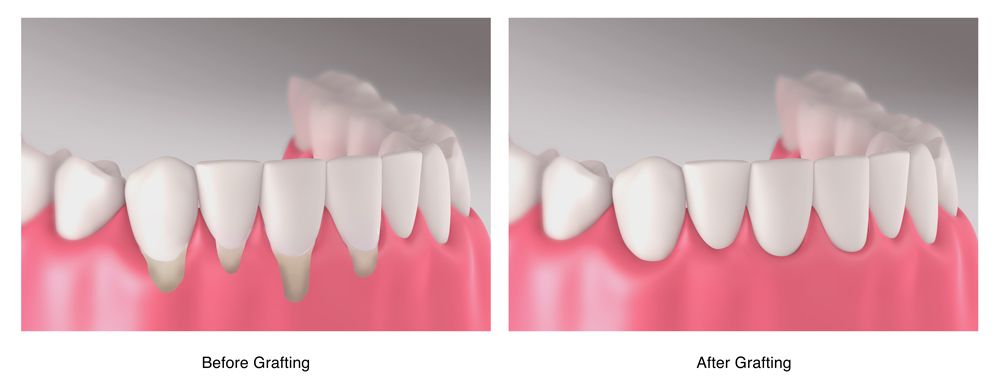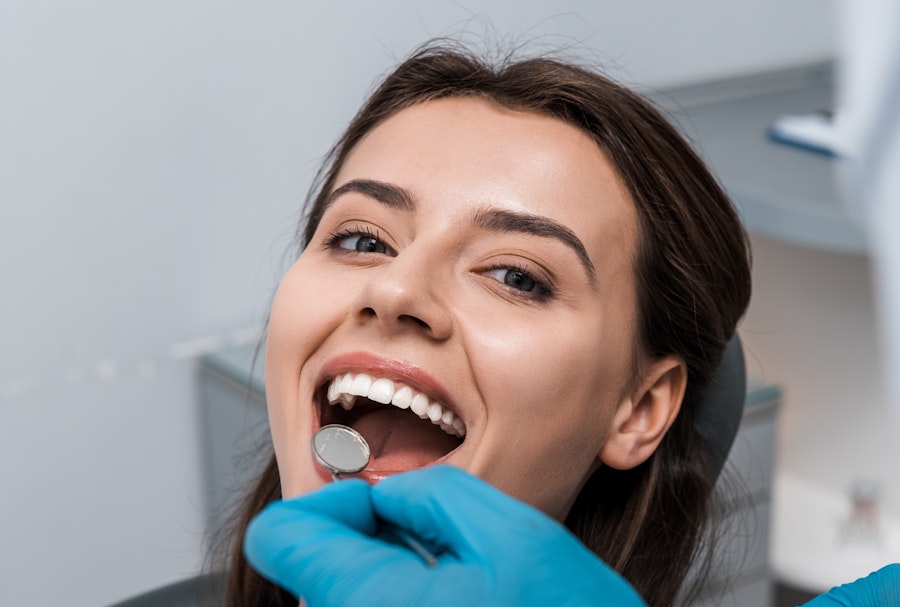A Gum Graft Can Restore the Strength and Aesthetics of Your Smile
Poor gum health and periodontal disease can cause gum recession, affecting the appearance of your smile and leaving your dental roots exposed. Fortunately, Dr. James M. Stein can perform a gum graft at his Boston, MA, practice to alleviate discomfort and restore a symmetrical gum line. By protecting your dental roots from additional exposure, treatment can also lower your risk for tooth decay and loss. In some cases, Dr. Stein may recommend a soft tissue graft after implant surgery. As the new tissues heal around the implants, they will lend strength and stability to the posts for long-lasting results.

A gum graft can cover exposed roots to minimize dental sensitivity.
What Is a Soft Tissue Graft?
A graft will replace lost tissue and restore your natural gum line. In many cases, Dr. Stein will perform this treatment to address severe gum disease. Over time, bacteria can build up along the gum line, causing your gums to pull away from your dental roots. The process can occur quickly and rapidly. If left untreated, the infection can spread from your soft tissues to supportive bone, resulting in widespread tooth loss. A gum graft can save your smile and help you avoid extensive restorative treatments, such as dentures or dental implants.
In some cases, Dr. Stein may recommend grafting for cosmetic purposes. Soft tissue recession can result in an uneven gum line, causing your smile to appear crooked even if your teeth are perfectly aligned. In other cases, your teeth may look overly long. A gum graft can help you achieve a more proportionate grin and a more youthful appearance.
A gum graft can help you achieve a more proportionate grin and a more youthful appearance.
Gum Grafting for Dental Implants
A gum graft may also be necessary if you receive dental implants, as it can help to prevent recession at the placement site and in turn, implant failure. Because gum and jawbone loss often occur simultaneously in patients with periodontitis, Dr. Stein may also recommend a bone graft prior to implant placement.
Various Gum Grafting Methods
Dr. Stein will use one of several tissue grafting techniques during treatment:
- If you receive a connective tissue graft, Dr. Stein will make an incision in your soft palate and take a sample from the layers of tissue underneath. He can then attach the harvested tissue to your gum tissue using small stitches. As the area heals, the new tissue will fuse with your gums.
- During a free gingival graft, Dr. Stein can take tissue from the outer layers of the soft palate. This method is most common among patients who have naturally thin gums.
- An acellular dermal matrix allograft is made of donor tissue. The attachment process is similar, but this method eliminates the need for incisions elsewhere in your mouth.
- If you have exposed dental roots, you may benefit from a pedicle graft. During this process, Dr. Stein can harvest tissue from the nearby area, using it to create a flap that will cover your roots.
Dr. Stein can conduct a thorough examination to determine which method is best for your needs.
Contact Us for More Information
If you are experiencing sensitivity as a result of exposed dental roots, we are here to help. Dr. Stein has been restoring patients' smiles for 30 years and can tailor your treatment to your unique dental needs and cosmetic goals. Contact our office online to schedule your consultation with Dr. Stein or call our practice at (617) 227-6076.





